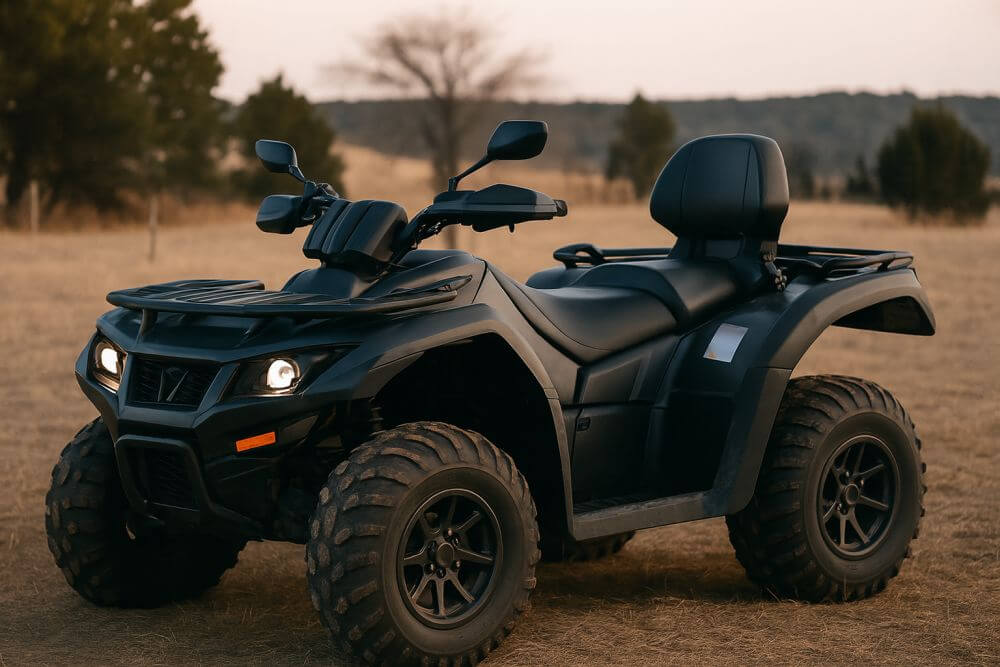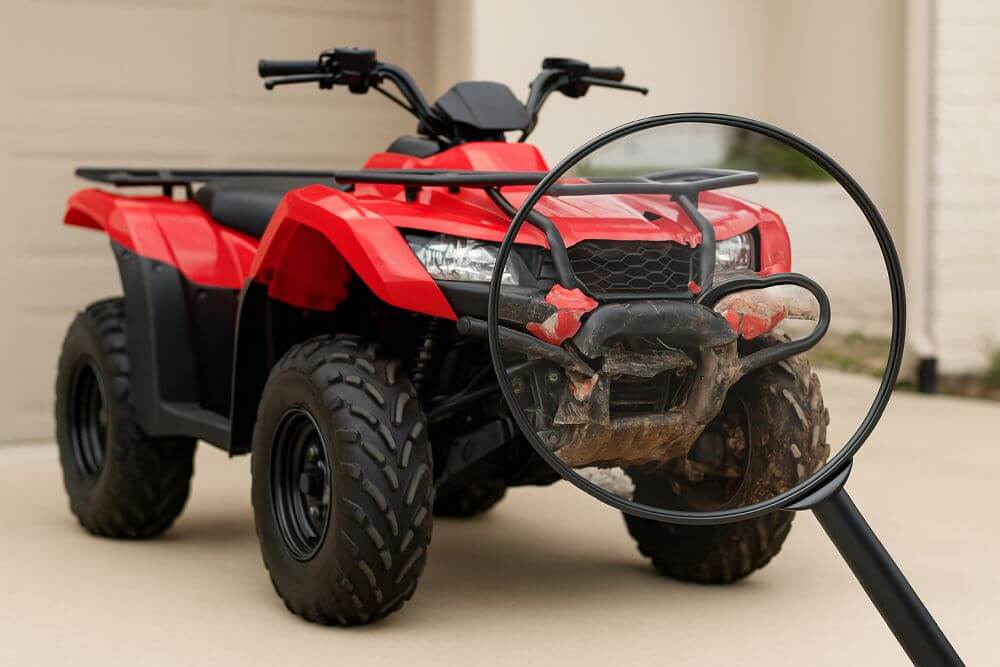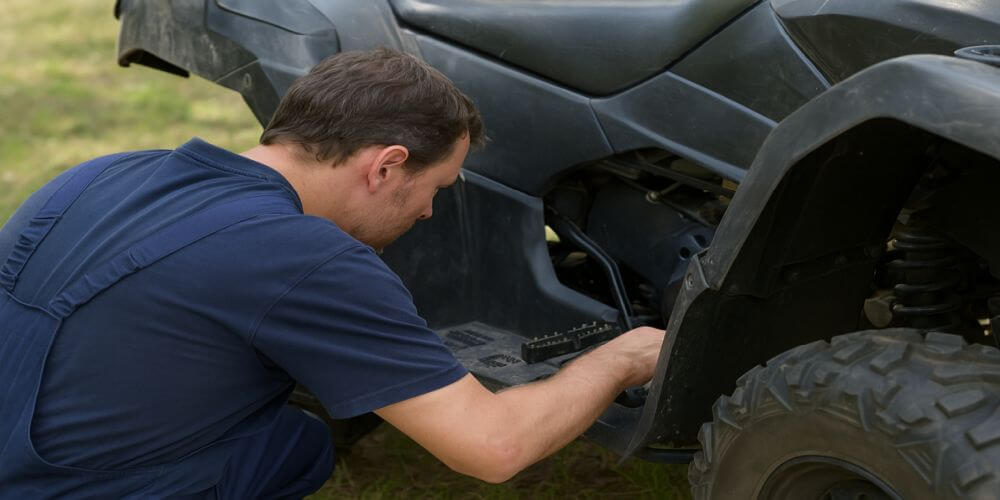All-terrain vehicles (ATVs) are popular for recreation, off-road work, and adventure travel — but they’re also prime targets for theft. Thousands of ATVs are stolen each year in the United States alone, and many end up back on the market through private sales or online listings. If you’re shopping for a used ATV, it’s critical to know how to spot red flags and avoid accidentally purchasing stolen property.

Fortunately, you can protect yourself with a mix of research, common sense, and a simple VIN lookup. In this guide, we’ll walk you through a complete smart buyer checklist — including how to use an ATV VIN check to instantly flag suspicious vehicles.
Why Are ATVs Commonly Stolen?
Unlike cars and trucks, ATVs are often:
- Stored in open spaces or less secure environments (barns, garages, trailers)
- Sold through informal channels without paperwork
- Unregistered or loosely tracked by DMV systems in some states
That combination makes them a hot target for thieves — and an easy trap for uninformed buyers.
Smart Buyer Checklist: How to Avoid Buying a Stolen ATV
Here’s your comprehensive step-by-step checklist for avoiding stolen ATVs when buying second-hand.
1. Start With an ATV VIN Check
Every ATV has a Vehicle Identification Number (VIN) — a unique 17-character code that serves as its digital fingerprint. This is the first and most critical thing to check.
- Locate the VIN (usually found on the frame, under the seat, or on the steering column)
- Run a free ATV VIN Check with a reputable service
- Review history data including:
- Theft records
- Prior ownership
- Title status
- Salvage or insurance records
A missing or altered VIN is a massive red flag. If a seller avoids giving you the VIN, walk away.
2. Ask for the Title or Bill of Sale
Even if your state doesn’t require ATVs to be titled, always request legal proof of ownership. This could be:
- An official state-issued title
- A notarized bill of sale
- A certificate of origin (for newer models)
Compare the name on the title to the seller’s ID. If the names don’t match and there’s no explanation, it could indicate a stolen vehicle.
3. Check the ATV’s Condition for Tampering
Many stolen ATVs are disguised or modified to hide their identity. Be on the lookout for:
- Ground-off or painted-over VINs
- Non-matching paint or decals
- Suspicious welds or frame damage near VIN areas
- Stripped serial numbers on engines or components
These can all be attempts to mask theft — or even swap parts from different machines.
4. Ask Detailed Ownership Questions
A legitimate seller should have no problem answering questions like:
- How long have you owned the ATV?
- Where did you buy it?
- Why are you selling it?
- Can I see service or registration records?
Vague or evasive answers could mean the seller isn’t the true owner.
5. Cross-Reference the Model Year & Specs
Once you have the VIN, decode it to verify:
- Model year
- Engine size
- Manufacturer and trim
- Country of origin
Use a tool like VinCheckPro’s free vehicle history report to confirm the data. If the specs don’t match what the seller claims, there’s reason to be suspicious.
6. Search Local and National Stolen ATV Databases
Some law enforcement and insurance groups maintain stolen vehicle databases. You can check the ATV’s VIN on platforms like:
- National Insurance Crime Bureau (NICB)
- State DMV or State Patrol websites
- Local stolen property records (if available)
Many of these are integrated into third-party VIN check tools for faster access.
7. Meet in a Safe, Public Location
Avoid meeting sellers in remote areas or untraceable locations. Ideally:
- Meet at a police station parking lot (many offer “Safe Exchange Zones”)
- Bring a friend with you
- Don’t carry large amounts of cash — use a traceable payment method if possible
8. Be Skeptical of “Too Good to Be True” Deals
If the price seems extremely low for the model year and condition, proceed with caution.
- Stolen ATVs are often “priced to move” quickly
- Scammers will push hard for fast cash deals
- If the seller says “no paperwork, but it’s legit,” that’s a red flag
Remember, you’re financially and legally responsible if you buy stolen property, even unknowingly.
What to Do If You Suspect a Stolen ATV
If something doesn’t add up during the buying process:
- Do not finalize the purchase
- Contact local police and report your suspicions
- If you already bought the ATV, contact law enforcement immediately and report your concerns — early disclosure may help avoid charges
Pro Tip: Decode More Than Just Theft
When you use a VIN decoder, you’re also gaining access to:
- Odometer records
- Lien or loan information
- Accident and damage history
- Recall notices
This helps you assess not just whether the ATV is stolen — but also if it’s mechanically sound, insurable, and worth your money.
👉 Try a full ATV VIN history report here.
Frequently Asked Questions (FAQ)
Is there a universal database for stolen ATVs?
No single database exists, but national tools like NICB and state DMVs are your best bet. Third-party tools like VinCheckPro consolidate multiple sources for convenience.
Do all ATVs have VINs?
Most modern ATVs do. Older models (pre-1980s) or race-specific machines might lack them — which increases theft risk.
Can I buy a used ATV without a title?
While some states allow it, it’s not recommended. Always get a signed bill of sale at minimum, and verify VIN records before purchase.
What should I do if a seller refuses to give the VIN?
Walk away. Any refusal to provide a VIN should be a dealbreaker.
Final Thoughts
Buying a used ATV doesn’t have to be risky — as long as you approach the process carefully. Always start with a VIN check, verify ownership documentation, and trust your instincts. A few minutes of due diligence can save you thousands of dollars and a potential legal headache.
Before you buy, get peace of mind with VinCheckPro’s free ATV lookup tool. It’s fast, free, and one of the smartest moves you can make as a buyer.


